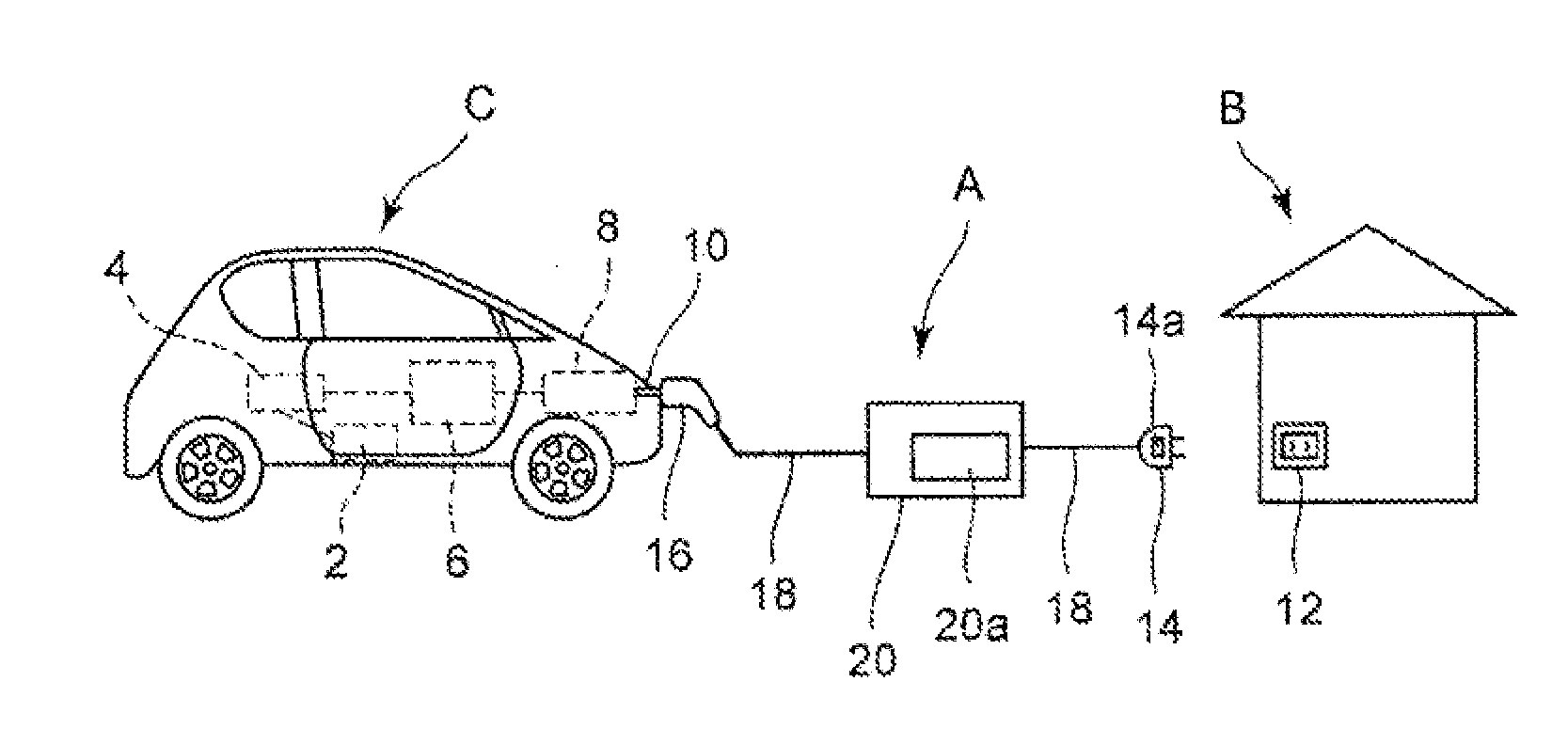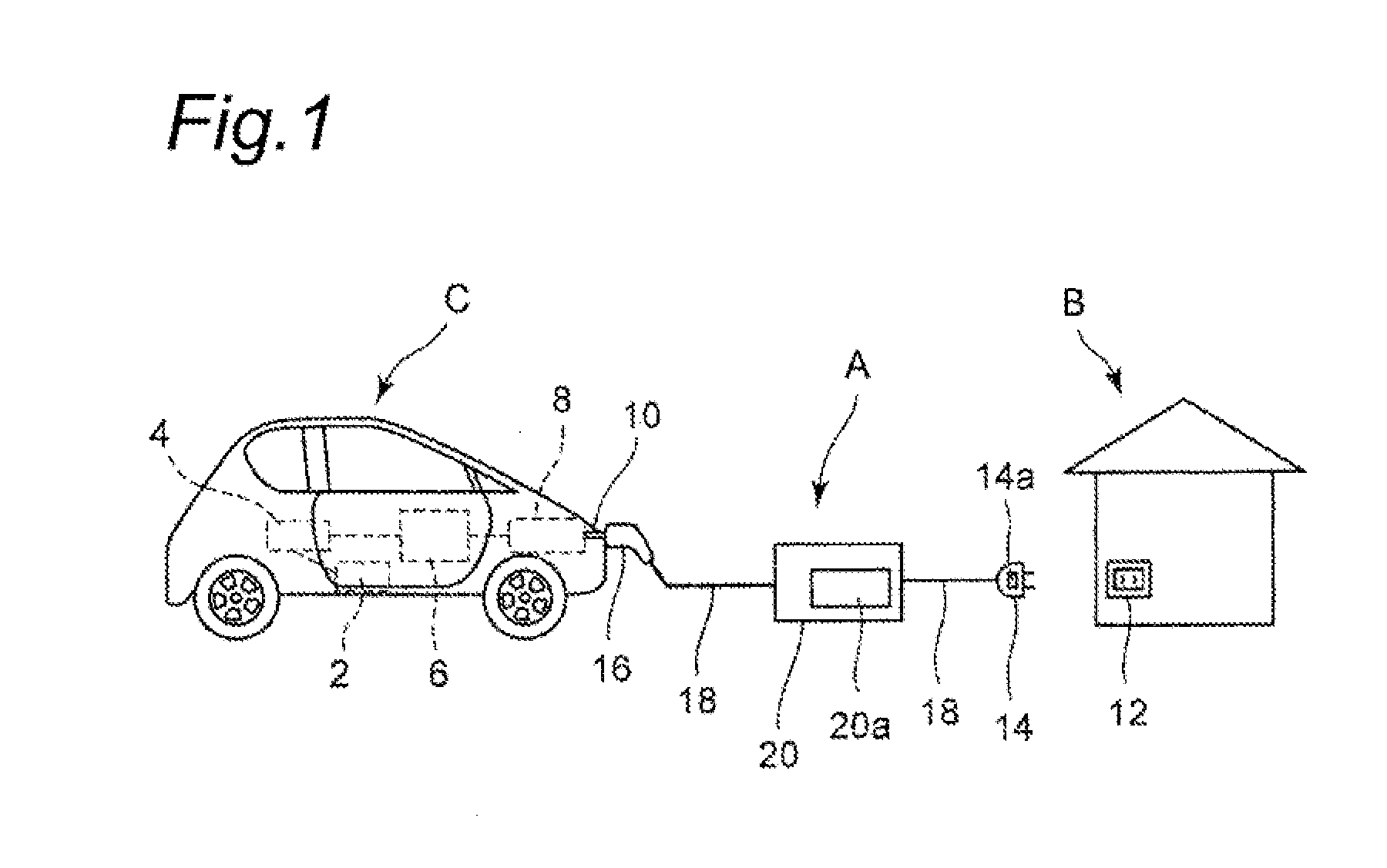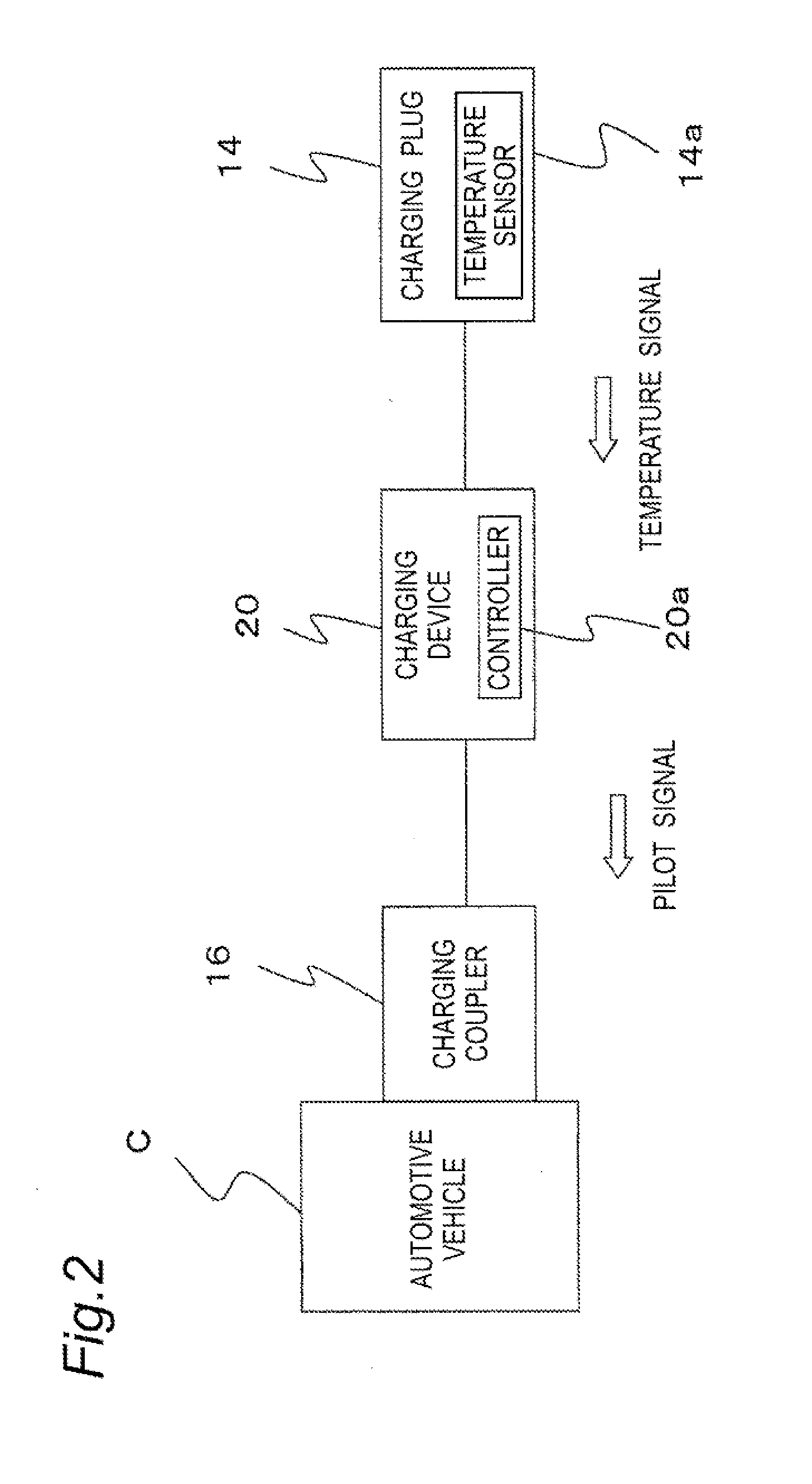Charging cable for electrically-driven vehicle
a charging cable and vehicle technology, applied in the direction of secondary cell servicing/maintenance, electric devices, batteries, etc., can solve the problems of prolonged charging time and problematic charging cable, and achieve the effects of reducing charging current, enhancing durability, and reducing charging tim
- Summary
- Abstract
- Description
- Claims
- Application Information
AI Technical Summary
Benefits of technology
Problems solved by technology
Method used
Image
Examples
embodiment 1
[0034]FIG. 1 depicts a state where a battery of an electrically-driven vehicle C is electrically charged from a commercially available power source of a standard home B using a charging cable A for an electrically-driven vehicle according to the present invention.
[0035]As shown in FIG. 1, the electrically-driven vehicle C is provided with a drive motor 2, an inverter 4, a battery 6 and a charge control device 8, all electrically connected to one another. The electrically-driven vehicle C is connected to the charging cable A for the electrically-driven vehicle (hereinafter referred to simply as the “charging cable”) via a connector 10 connected to the charge control device 8. The charging cable A is used to connect a receptacle outlet 12 provided on, for example, an outer wall of the standard home B to the connector 10 on the side of the electrically-driven vehicle C to charge the battery 6 installed in the electrically-driven vehicle C.
[0036]The receptacle outlet 12 is an outlet or ...
embodiment 2
[0064]FIGS. 5 and 6 depict a second embodiment of the present invention. FIG. 5 is a schematic view depicting a state where a battery of an electrically-driven vehicle is electrically charged using a charging cable according to the second embodiment of the present invention and FIG. 6 is a schematic block diagram of the charging cable shown in FIG. 5. In the second embodiment of the present invention, a temperature sensor 16a is provided in the charging coupler 16. The temperature sensor 16a detects the temperature of the charging coupler 16 and outputs a temperature signal indicating the temperature of the charging coupler 16 to the controller 20a of the charging device 20. Upon receipt of the temperature signal, the controller 20a outputs a pilot signal corresponding to the temperature signal to the charge control device 8 of the electrically-driven vehicle C via the charging coupler 16. The charge control device 8 can recognize, based on the pilot signal received, the charging cu...
embodiment 3
[0066]FIG. 7 is a schematic block diagram of a charging cable according to a third embodiment of the present invention, in which a temperature sensor 20b is provided in the controller 20a of the charging device 20. It is assumed that the charging of the electrically-driven vehicle C is conducted under various circumstances and that the controller 20a abnormally generates heat, for example, with the charging device 20 left in the hot sun. It is also assumed that abnormal heat generation may occur due to incomplete connection or arc tracking at, for example, connecting portions between the connecting cable 18 of the controller 20a and terminals. In the third embodiment, the temperature sensor 20a provided in the controller 20 can prevent abnormal heat generation in the controller 20a, thus making it possible to produce similar effects as in the above-described first embodiment.
PUM
 Login to View More
Login to View More Abstract
Description
Claims
Application Information
 Login to View More
Login to View More - R&D
- Intellectual Property
- Life Sciences
- Materials
- Tech Scout
- Unparalleled Data Quality
- Higher Quality Content
- 60% Fewer Hallucinations
Browse by: Latest US Patents, China's latest patents, Technical Efficacy Thesaurus, Application Domain, Technology Topic, Popular Technical Reports.
© 2025 PatSnap. All rights reserved.Legal|Privacy policy|Modern Slavery Act Transparency Statement|Sitemap|About US| Contact US: help@patsnap.com



